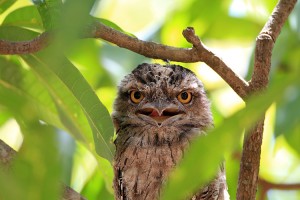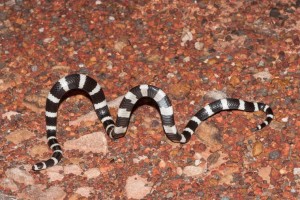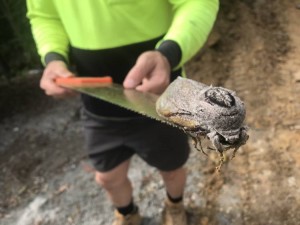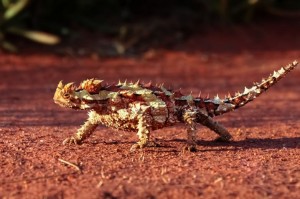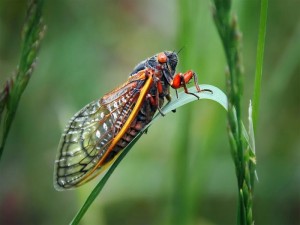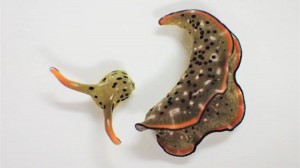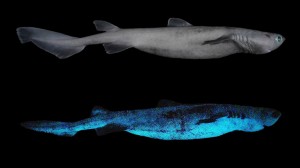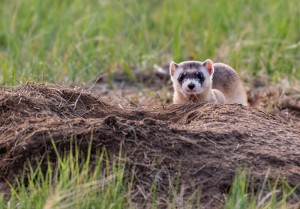Tired Elk Relieved
Tuesday, October 19th, 2021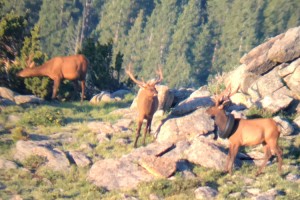
The elk with a tire around its neck was first spotted in July 2019 by a Colorado wildlife officer in Mount Evans Wilderness.
Credit: Jared Lamb, Colorado Parks and Wildlife
School, homework, canceled activities, and retail shortages may have you feeling tired. But wildlife officials in October reached out to help an elk that was literally tired—the elk had spent two years with a tire stuck around its neck.
The bull (male) elk got a real weight off his shoulders on Oct. 9, 2021, when Colorado Parks and Wildlife officers removed the tire from around his neck. The oddly accessorized elk was originally spotted in July 2019 by a wildlife officer conducting a count of bighorn sheep and mountain goats in Mount Evans Wilderness. The Mount Evans Wilderness covers some 74,401 acres (30,109 hectares) of woods about 40 miles (64 kilometers) west of Denver. Officials had made four attempts to remove the tire over the previous week but were unsuccessful.
Officers do not know how the elk got the tire stuck on his neck. In Colorado, wildlife officials tranquilize about ten bull elk and buck (male) deer each year to remove objects from their necks. Many wild animals get stuck in basketball hoops, hammocks, buckets, laundry baskets, holiday decorations, and other objects. Wildlife officials asked residents of central Colorado to keep an eye out for the elk and to alert them to any sighting. There had been six sightings of the tired elk over the previous two years, mostly on trail cameras. Officials had been working tirelessly to locate and help this particular elk until resident Patrick Hemstreet reported the elk was in a herd of 40 just outside his house in Pine, Colorado. Hemstreet texted Dawson Swanson, a wildlife official who lives nearby.
The American elk is a large deer. The bull stands about 5 feet (1.5 meters) high at the shoulder and may weigh from 700 to 1,100 pounds (320 to 500 kilograms). Its rounded antlers can span more than 5 feet (1.5 meters). The antlers of a grown bull will have a total of about 12 to 14 points. Antlers grow during the spring and summer and are shed in late winter, so wildlife officials believe the elk got the tire stuck either in the winter or early spring. Cows, female elks, are smaller and do not have antlers. During September and October, bulls fight one another to gain control over harems, groups of cows. This activity distracts the elks from the presence of humans around them, making it a convenient time for officers to get the tire off.
Once the officers tranquilized the elk, they determined the animal was about 600-pounds (275 kilograms) in weight and 4 1/2 years old. The officers tried to cut the tire, but they were unable to do so when its steel reinforcement belts broke their saw. Luckily, there was still room around the elk’s neck to remove the tire after cutting off the antlers. The inside of the tire was packed with over 10 pounds (4.5 kilograms) of soil and pine needles. The elk’s neck was in good condition despite carrying around the heavy tire with debris for so long, and the elk’s antlers will grow back. After officials revived the elk, it quickly woke up, stood up, and walked away—tired no more. The officials kept the antlers and retired from their search.

